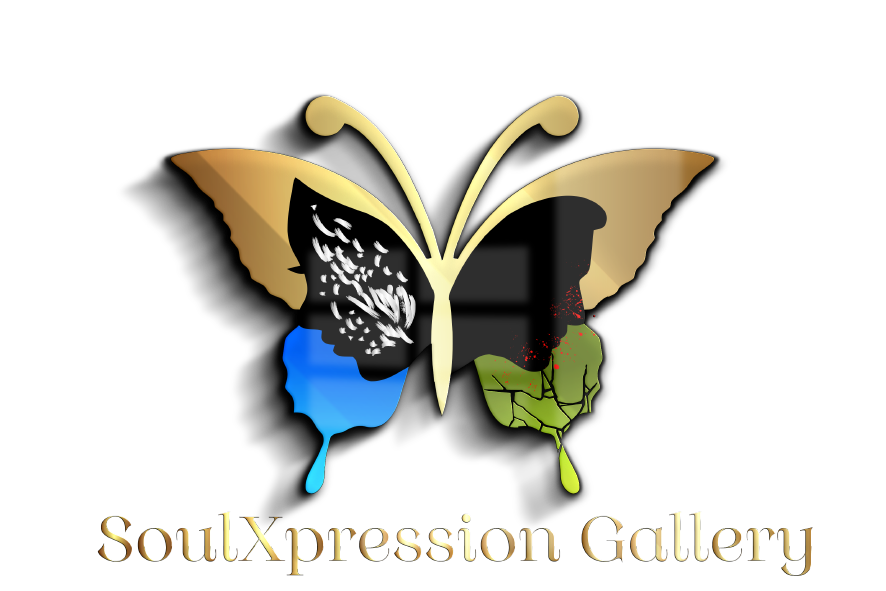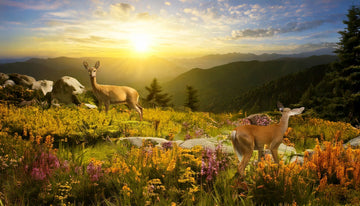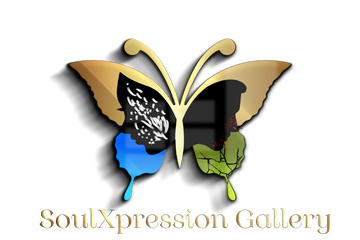The Earth's Natural Symphony: Harmony and Beauty in Nature
Our planet is an exquisite gallery of natural artistry, where beauty manifests in endless forms and scales. From microscopic patterns in frost crystals to the sweeping grandeur of mountain ranges, Earth displays artistic mastery that no human hand could replicate.
The interplay of light at dawn and dusk transforms ordinary landscapes into breathtaking spectacles of color. Sunlight filters through forest canopies creating dappled patterns that dance across the forest floor. Moonlight casts silver pathways across rippling waters. Stars paint the night sky with ancient light, forming constellations that have guided humans for millennia.
In the ocean depths, coral reefs form living sculptures of extraordinary complexity and color. Fish move in synch. Bioluminescent creatures create living light shows in the darkest waters. Waves carve coastlines into dramatic forms, while rivers patiently sculpt canyons across geological time.
This beauty emerges from profound interconnection. The water cycle links ocean to cloud to mountain stream in an endless loop. Carbon cycles through the atmosphere, into plants, through animal bodies, and back to soil. Pollinators and flowering plants have co-evolved in relationships of mutual benefit, creating the spectacular diversity of blossoms we cherish.
Even seemingly harsh relationships reveal deeper harmony: predators maintain the health of prey populations; scavengers and decomposers transform death into new life; fire clears old growth to make way for regeneration. Each species occupies its ecological niche, contributing to the whole while finding its own sustenance.
Seasonal rhythms orchestrate nature's cycles—trees drop leaves to conserve energy in winter, hibernating animals conserve resources during scarce times, and migratory birds follow ancient pathways across continents. These patterns reflect Earth's relationship with the sun, as our planet's tilted axis creates the seasons while its rotation gives us day and night.
The moon pulls on Earth's oceans to create tides, influencing countless marine creatures whose reproductive cycles synchronize with these lunar rhythms. Coral reefs spawn en masse under specific moon phases. Coastal creatures time their activities to the ebb and flow of tidal waters.
This harmony isn't static perfection—it's dynamic balance, constantly adjusting and evolving. Natural systems incorporate change, from daily weather patterns to geological shifts spanning millions of years. Life continuously adapts to these changes, finding new equilibriums within Earth's boundaries.
The Earth itself tells a story of artistic evolution, where geological processes have created the canvas upon which life paints its variations. Wind-sculpted deserts, ice-carved valleys, volcanic islands rising from the sea—each landscape represents chapters in Earth's ongoing creation.
In this grand symphony, each element plays its part. The buzzing insect, the towering redwood, the microscopic plankton, the circling hawk—all connected in a web of relationships that sustains the whole. Earth's beauty emerges not just from individual elements but from their interrelationships, creating a living masterpiece of which humans are just one part—observers, participants, and caretakers of this extraordinary planetary artwork.
How Earth's Natural Harmony Restores the Human Soul
The Earth's natural harmony doesn't merely exist as a spectacle to behold—it resonates deeply within the human spirit, offering profound healing to our souls. When we immerse ourselves in nature's harmonious dance, something fundamental shifts within us.
The rhythmic pulse of ocean waves induces a meditative state that calms an anxious mind. Research has shown that the mere sound of flowing water reduces stress hormones in our bodies. Similarly, the dappled light filtering through forest canopies creates patterns that our brains find inherently soothing, releasing tension we may not even realize we're carrying.
Colors in nature—the deep blues of clear skies, the verdant greens of healthy forests, the warm golds of autumn leaves—affect our neurochemistry in ways that synthetic environments simply cannot. These natural palettes evolved alongside our visual perception, providing visual nutrition our psyches instinctively crave.
In a forest, where time moves at the pace of growing trees rather than digital notifications, our nervous systems find respite from the constant stimulation of modern life. The Japanese practice of shinrin-yoku, or "forest bathing," recognizes this healing quality, encouraging people to absorb the atmosphere of the forest through all senses—a practice now supported by medical research showing reduced blood pressure, improved immune function, and enhanced mental clarity.
The cyclical nature of Earth's processes—day flowing into night, seasons transitioning one to another, tides ebbing and flowing—reminds us that change is natural and necessary. In witnessing these eternal cycles, we find perspective for our own challenges and transitions. The oak tree sheds its leaves each autumn not in defeat but as preparation for renewal; the tide retreats only to return with fresh energy.
When we gaze at star-filled skies, much as our ancestors did millennia ago, we experience the healing power of awe. This emotion, uniquely evoked by nature's grandeur, diminishes our sense of individual importance while paradoxically connecting us to something vast and meaningful. Psychological studies show that experiences of awe reduce inflammation markers in the body and increase feelings of well-being and generosity.
The intricate relationships between species in healthy ecosystems remind us that we too belong to something larger than ourselves. Modern isolation and individualism have taken a toll on human psychological health; reconnecting with nature's web reawakens our innate sense of belonging and purpose. We are reminded that we are not separate from nature but integral participants in its symphony.
Even brief encounters with natural beauty—a sunset viewed from a city park, birdsong filtering through an open window, the scent of rain-soaked earth—can interrupt cycles of rumination and restore emotional equilibrium. Nature engages our senses fully, anchoring us in the present moment and offering respite from both future anxieties and past regrets.
The Earth's harmonious systems offer something increasingly rare in our technological world: encounters with authentic wonder that require nothing of us but receptive presence. Unlike entertainment designed to capture attention through escalating intensity, nature's subtle beauties invite gentle attention that refreshes rather than depletes our mental resources.
Perhaps most healing of all is the reminder that even as landscapes change and species evolve, the underlying principles of interconnection and balance persist. In a world that often feels chaotic and unpredictable, nature demonstrates that harmony can emerge from complexity—not as rigid order but as resilient, adaptive relationship. This living example offers not just comfort but a template for how we might create more sustainable, harmonious human systems.
By reuniting with Earth's natural symphony—whether through extended wilderness immersion or moments of mindful connection with a houseplant—we recover parts of ourselves that modern life has fragmented. We remember how to listen, how to see, how to be fully present. In this remembering lies healing for both the human soul and, potentially, for our relationship with the planet that sustains us.
What Nature Teaches Us About True Art
Nature reveals that authentic art emerges from harmony, connection, and purpose. The Earth's spectacular canvas demonstrates several fundamental principles:
-
Interconnection as Creative Force
In nature, nothing exists in isolation. The coral reef's beauty emerges from countless organisms living in relationship. Rivers shape landscapes while being shaped by them. True art similarly emerges from meaningful connections—between artist and material, between creation and audience, between expression and deeper truths.
-
Beauty Through Purpose
Every element in nature's symphony serves a function while contributing to the whole. Even seemingly decorative elements serve life-sustaining purposes. This suggests true art balances aesthetic beauty with deeper meaning and purpose.
-
Authentic Expression
Nature doesn't pretend. The mountain doesn't aspire to be an ocean; the oak doesn't imitate the pine. Each expresses its unique essence authentically. The healing power of nature comes partly from this honesty—it shows us what genuine expression looks like, free from artifice or performance.
-
Rhythms and Cycles
Nature's artistic processes respect rhythms and timing—seasons of growth and rest, cycles of creation and decomposition. This patient unfolding contrasts sharply with our culture's demand for constant production and immediate results.
-
Accessible Wonder
Nature's artistry is universally accessible. The birdsong plays for anyone willing to listen. This quality of beauty suggests true art should connect broadly rather than being confined to exclusive spaces.
How Modern Society Has Distorted Art
In contrast to nature's integrated approach, modern society has often:
-
Commodified Creativity
Art has frequently been reduced to its market value—worth measured in auction prices rather than transformative impact. This commodification pressures artists to produce what sells rather than what authentically expresses their vision or serves a deeper purpose.
-
Isolated Art from Life
By confining art primarily to galleries, theaters, and concert halls, modern society has often separated creativity from daily experience. Nature shows no such divisions—beauty and function intertwine seamlessly. True art, like nature's expression, might better serve humanity by being woven throughout life rather than cordoned off in designated spaces.
-
Prioritized Novelty Over Depth
Modern art markets often reward shocking innovation over sustained depth. Yet nature demonstrates that true originality emerges organically from authentic exploration rather than the pursuit of novelty for its own sake. The ancient patterns of waves breaking on shore remain endlessly fascinating precisely because they express fundamental truths.
-
Fragmented Experience
While nature engages all senses in a unified experience, modern art forms have often become increasingly specialized and fragmented. The healing quality of nature's symphony suggests humans may need holistic artistic experiences that engage multiple senses and speak to the whole person.
-
Accelerated Creation
Modern production schedules rarely allow for the contemplative patience exhibited in natural processes. Mountains form over millennia; forests grow through centuries of seasonal cycles. This suggests that truly meaningful art might require slower, more attentive creation than our culture typically permits.
Toward a Reunion of Art and Nature's Wisdom
The healing power of nature offers guidance for reclaiming art's essential purpose. Perhaps true art, like nature itself, should:
- Connect rather than isolate
- Express authentic truth rather than chase trends
- Serve both beauty and purpose
- Remain accessible rather than exclusive
- Respect natural rhythms of creation
- Engage the whole person (the artist as well as the potential buyer)
- Remind us of our belonging to something larger than ourselves
In this understanding, art becomes not a commodity to consume but a vital expression of life's interconnected beauty—much like the Earth's own creative expressions that have nourished human souls across generations. By learning from nature's artistic wisdom, we might restore art to its rightful place as a teaching and healing force that helps us remember our true relationship with each other and the living world.





